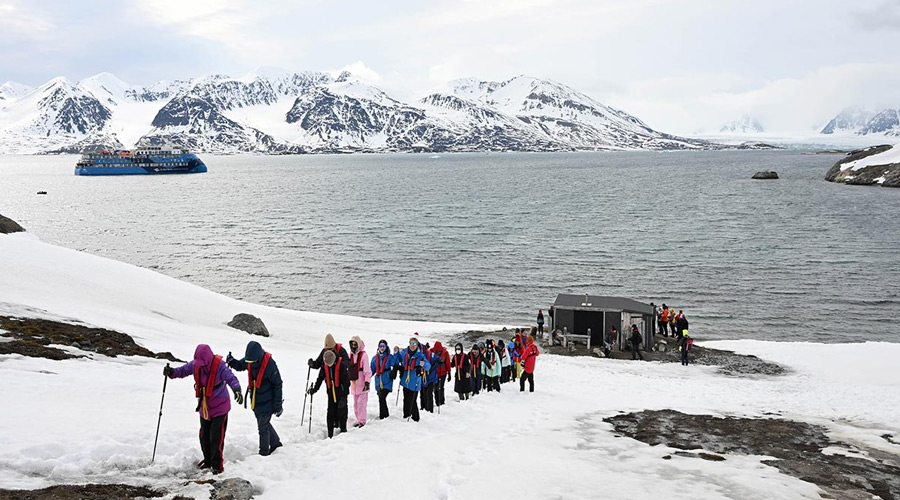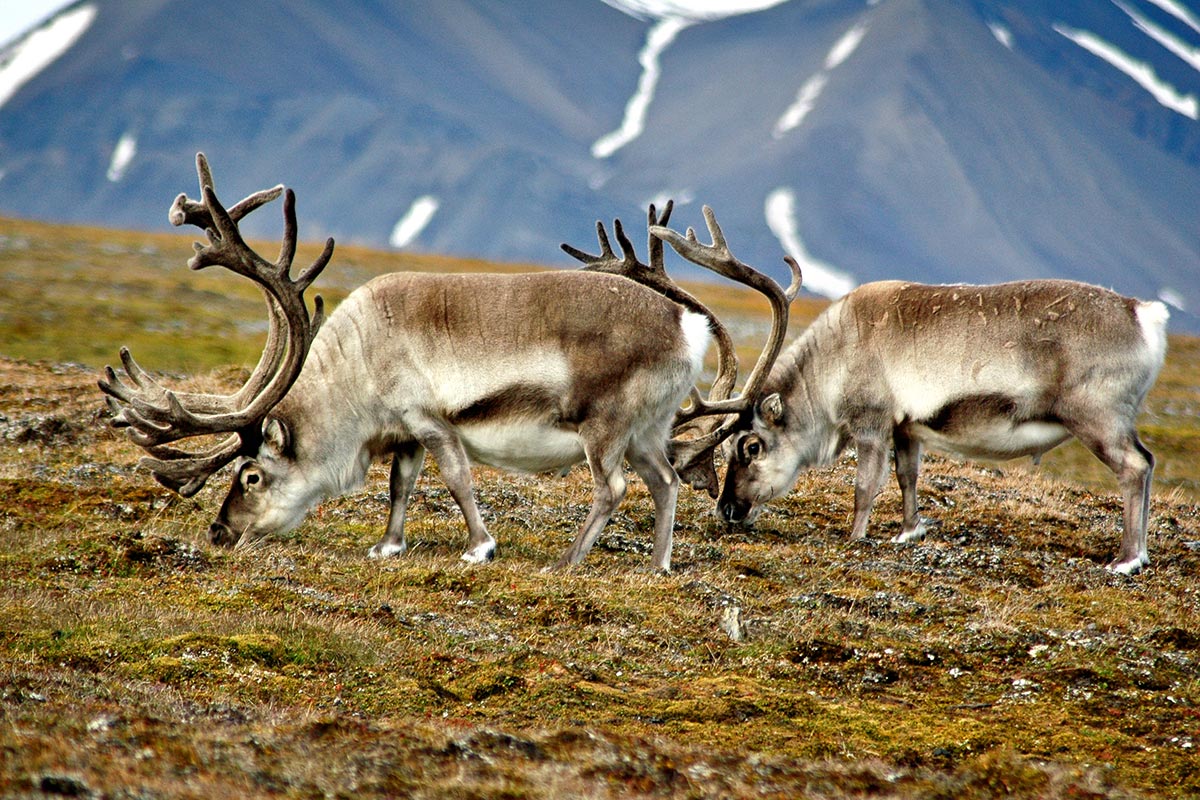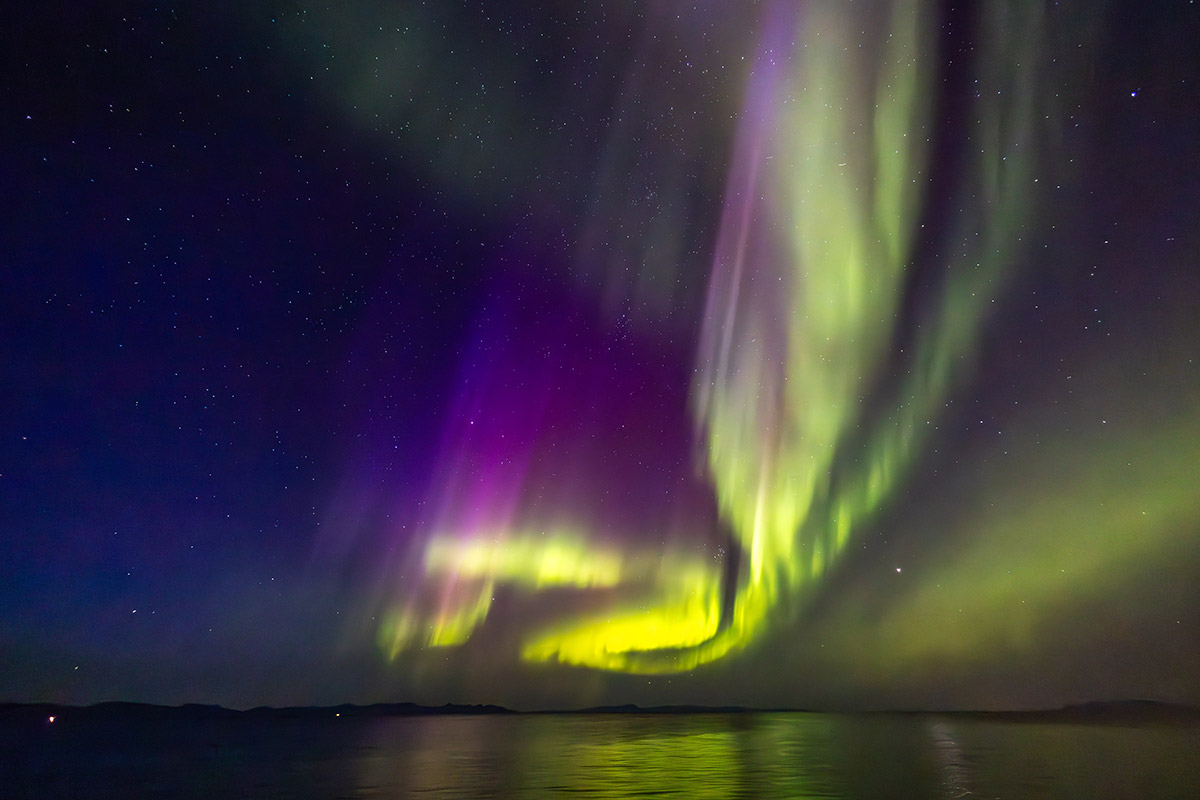When to Travel
The Seasons of the Arctic
Outside of the brutal frigid Arctic winter, the face of the region changes with every day. The winter polar night gives way to the midnight sun as life returns to the North. Whether you travel to the Arctic in spring, summer or autumn, life in the Arctic flows at a frenetic pace, always bracing for the next winter. From the first flowers on the tundra, to hatchlings leaving the nest, to winter’s first snowfall and the return of the northern lights, beauty is redefined with every passing day.

Spring in the Arctic (May-June)
Spring is a particularly breathtaking time in the Arctic, as the land and wildlife of the region begin to come back to life after winter. The coasts of the Arctic have been locked in by ice for months, which finally begins to break up, allowing humans and animals alike to access the ocean. Whales start their northward migration, beginning to feast on the capelin which come out of the depths to spawn. Winter still clings on, with pockets of fast ice clinging on in deep fjords and sheltered bays.
On land, the snow is melting, although many areas remain under a white blanket, and plants begin to strive towards the weak Arctic sunlight. As ponds and creeks begin to thaw, they also unfortunately bring with them hatching biting insects. Birds return to the cliffs, squabbling for the best spots, and Arctic foxes and hares begin to leave their dens with their young. Every night gets shorter as the days lengthen – changing by as much as 40 minutes per day at northern latitudes such as Svalbard. By late May, the whole Arctic is bathed in the midnight sun, which circles the horizon, never setting. Flowers begin to bloom, and the tundra changes from brown to green, studded with splashes of colour, bathed in 24-hour sunlight.

The Arctic Summer (Mid June-Mid Aug)
The height of the Arctic summer is marked by long sunny days, with no darkness. On land, reindeer and muskox are grazing on summer’s bountiful vegetation, and chicks are beginning to venture out of their ground nests, or leaping from cliffs to begin their life at sea. Arctic foxes, skuas and gulls prowl bird colonies, looking for eggs and chicks to feed to their young, and the ocean is alive with whales feasting on the summer plankton bloom.
The snow is gone, and the sea ice has retreated northwards – polar bears, belugas and other ice-loving species can be harder to find as they follow the ice into the Arctic ocean.
In towns and villages across the Arctic, humans are also enjoying summer’s bounty, harvesting fish and game. Some of this is dried in the summer breeze to preserve it, while most goes into the freezers which are a feature of every Arctic home. Towns and villages are alive with the yowling of newborn sled dog puppies and the drone of boat engines as locals set out from town to their summerhouses and hunting and fishing grounds.

Autumn in the Arctic (Mid-August – October)
Winter is never far in the Arctic, and summer is a brief flourishing of life around winter’s brutality. Autumn comes quickly in the Arctic. The tundra begins to glow with red and gold hues by August as plants begin to go dormant. Geese, reindeers and muskox gorge themselves, putting on weight before the snow returns. Bird nests are now empty, the chicks fledged and fending for themselves, and sled dog puppies are put into harnesses, ready for a life running through the snow.
In the skies, the midnight sun ends, and darkness rapidly returns. Many visitors find Autumn the best time to visit the Arctic. Balmy days with frosty nights minimise the number of irritating biting insects, and the tundra brims with delicious mushrooms and berries. And most spectacular of all, as darkness returns to the Arctic skies, so do the breathtaking northern lights, which have dazzled polar explorers since time immemorial.
